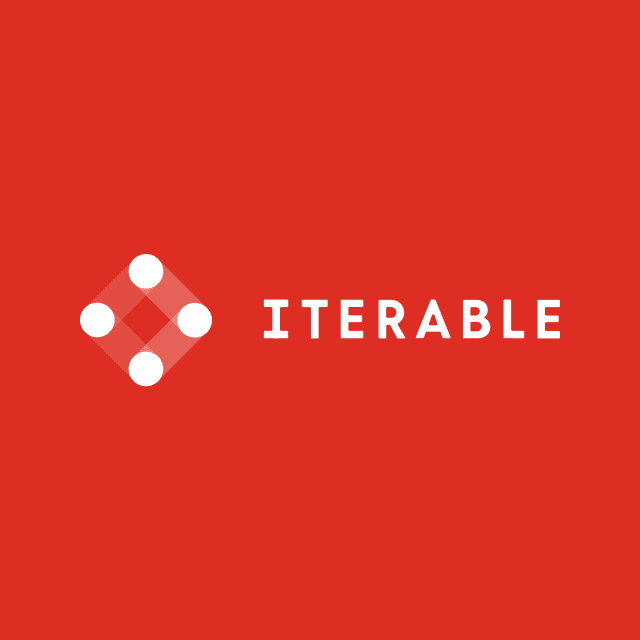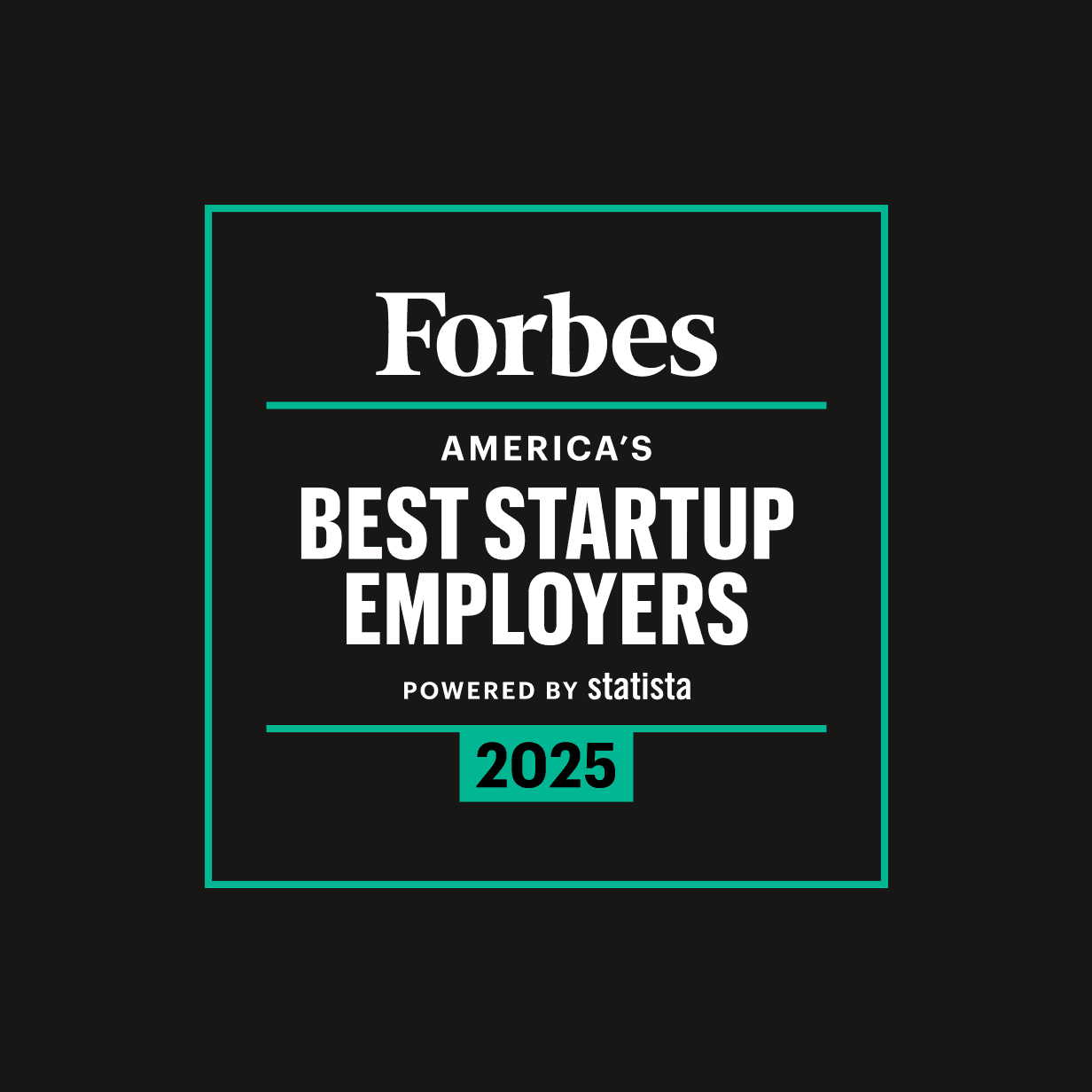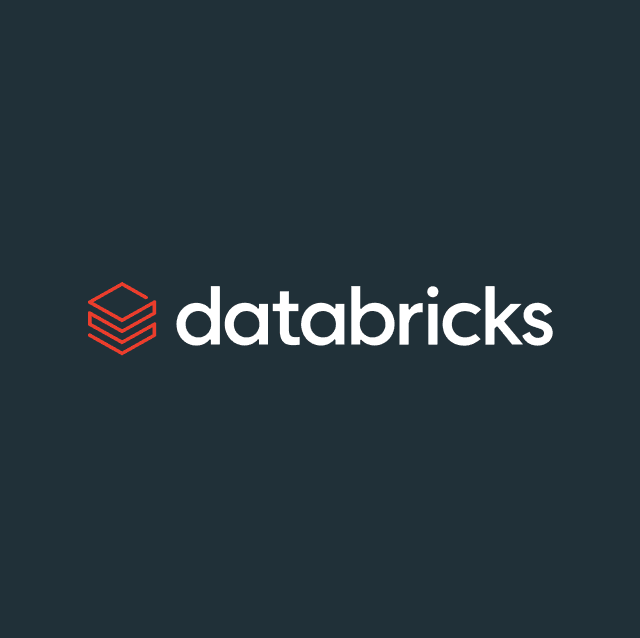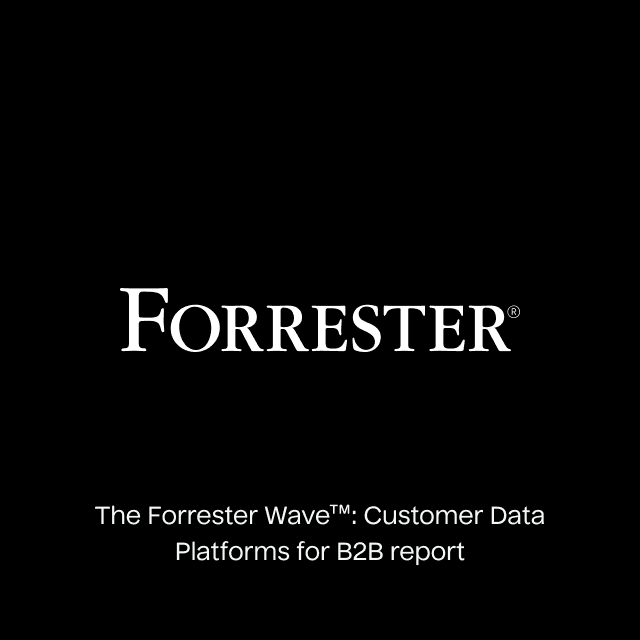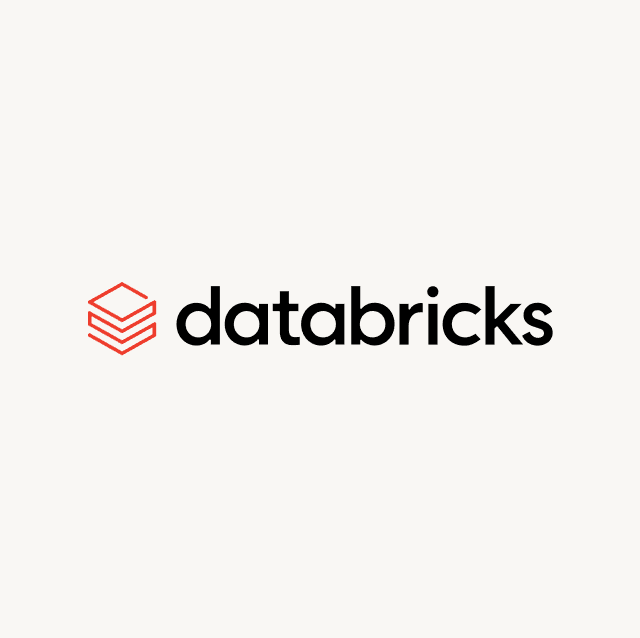Mastering personalization is table stakes for marketers. 81% of customers prefer personalized interactions and personalization is one of the primary use cases for marketing AI.
But you probably already knew that. What you may not know, and what most CDPs won’t tell you until after you sign a contract, is that the vast majority of CDPs are not actually successful at enabling personalization. In fact, 90% of marketers say their CDP does not do what they need it to.
One of the reasons is a technical-sounding term that is actually surprisingly simple: it all comes down to your data schema.
This blog post will explain what this means, why it's important, and how to determine if your CDP hinders your personalization efforts.
Why data schemas matter for personalization
Data schemas define how data is structured, including the data types (like users, events, accounts, households) and relationships between those data types. If you think of your data warehouse like an actual house, your data schema is the blueprint. Just like a blueprint outlines the structure of a house—where the rooms are and how they connect—a data schema defines how your data is organized and how different parts of your data relate to one another.
The most important thing about data schemas is that they are unique to your business. One retail company has a different blueprint than another retail company. All retail companies have different blueprints than insurance companies, or hotel companies, and so on.
CDPs that store your data also have unique data schemas. If your CDP has a rigid schema, then it can’t adapt to your particular blueprint, and you won’t be able to use all your data for personalization.
A schema-agnostic CDP adapts to your data schema, allowing you to use all relevant information for personalization. An inflexible one requires you to conform to an arbitrary list of data requirements or perform a huge amount of costly and slow customization to access all of your data.
Self-diagnostic: How to know if you have a CDP schema problem
If any of the following apply to you, your CDP may have a data schema problem:
- You do not have access to all of your data. If your CDP stores data on its own, as opposed to tapping into a data warehouse, then you likely can’t access all of your data. This is because it’s usually too complex and expensive to put all your data into a second system like a CDP (and that’s if your security team even allows it).
- It takes weeks or months to gain access to new data. Assuming your company is collecting the data in question, this should only take a day or two (maximum). This should be a quick task for your internal data team or even a fairly technical marketer or marketing operations person. You should not need to engage with a complex technical process or your CDP customer service team.
- It takes weeks or months to explore and activate a potential new audience segment. If this takes longer than a few minutes, something is wrong. Marketers should be able to do this with minimal effort on a self-serve CDP interface.
Why most CDPs have a data schema problem and can’t support your personalization goals
One of the primary reasons companies invest in a CDP is to unlock data that enables meaningful customer engagement. That data has even more significance today as marketers seek to scale personalization with AI, which only works when given relevant data.
Unfortunately, most CDPs face a fundamental challenge: in order to support multiple businesses with a single product, they require their customers to adopt a single common data schema that may have nothing to do with the customer. To use our previous analogy, this is like trying to map all of the data for a multi-national hotel company using the data blueprint for a small single-product eCommerce store. If that sounds ludicrous, that’s because it is.
In the process of manipulating data to match a CDP’s data schema, valuable customer data is lost. For strategic personalization, and to unlock the benefits of AI, you need a CDP that adapts to your unique data schema, not the other way around.
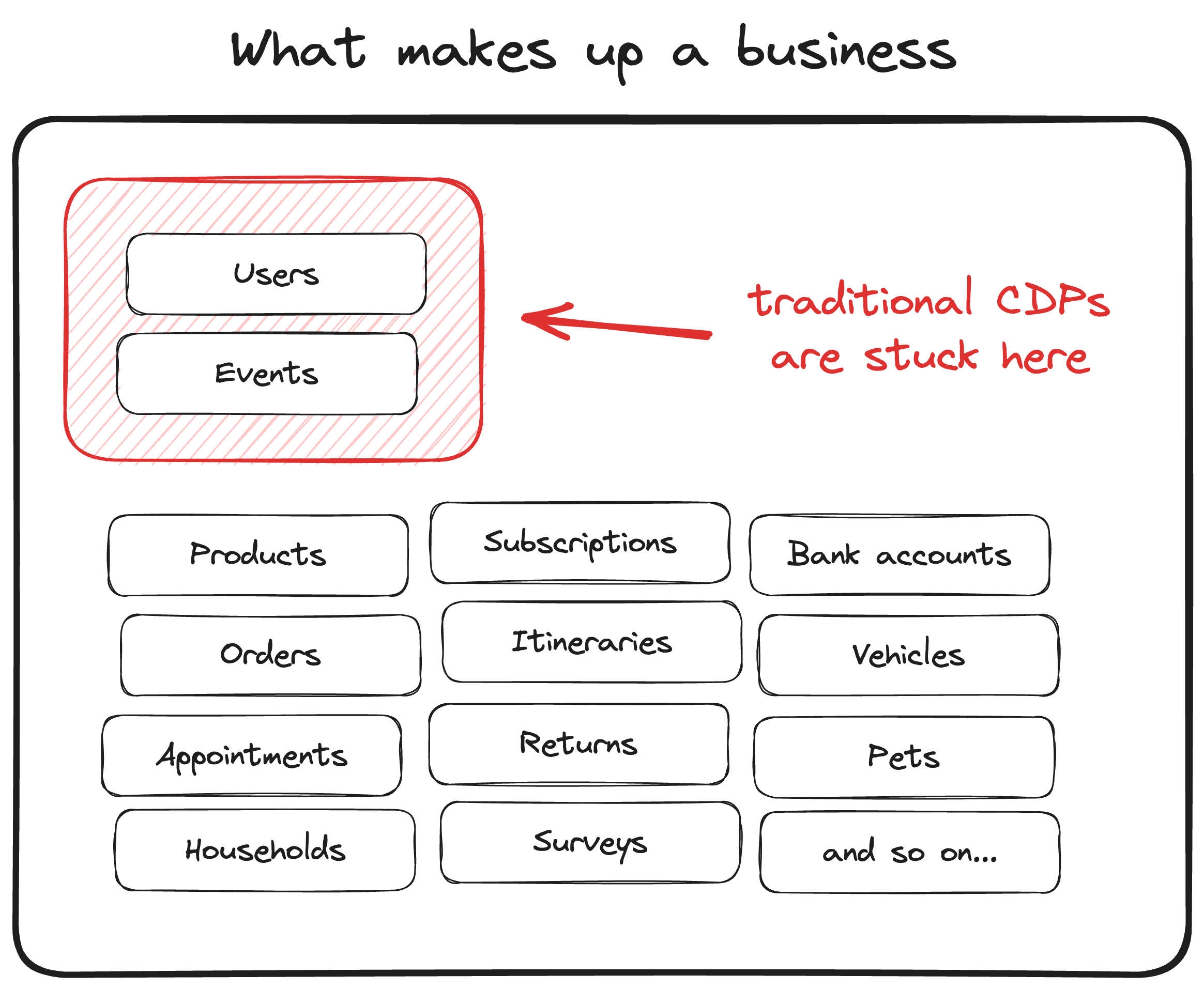
Most CDPs have a standard data schema that accepts objects like “users” and “events.” Your business might not fit into those narrow boxes.
The benefits of a data schema-agnostic CDP
If your CDP is data-schema agnostic, it will accommodate your company’s unique data structure and ensure access to all relevant data for personalization. Whatever your company tracks–subscriptions, pets, vehicles, and more–can be used to personalize your marketing.
For example: imagine two friends, Carly and Alex, who purchase tickets to an NFL football game. Carly is a superfan–she plays fantasy football and watches weekly games with her family every Sunday. Alex, however, knows little about football, but is excited to attend her first game. After Carly’s team wins, they buy matching shirts at a concession stand.
Without comprehensive data, it would be easy to group these two different customers together. Both of them are women, attended the same game, and bought the same shirt. However, subscription and household data reveal key differences. Carly might be annoyed by marketing that encourages her to subscribe to NFL streaming services she already uses, while Alex would likely unsubscribe from emails targeting serious fans.
When a CDP limits access to all your data, you miss opportunities to create meaningful customer experiences. A schema-agnostic CDP enables you to leverage every data point, helping you deliver tailored campaigns with messaging, offers, and CTAs that resonate with each customer.
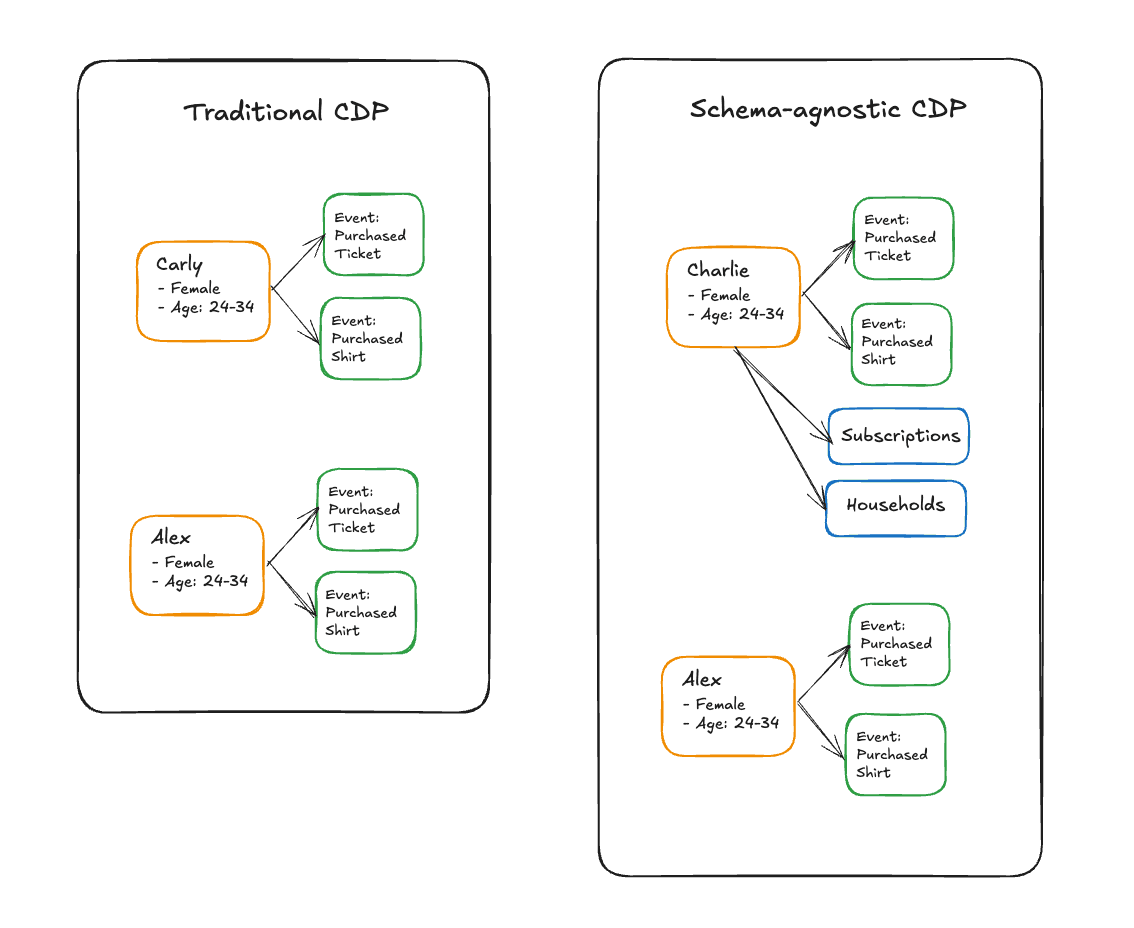
Traditional CDPs limit access to your data. Schema-agnostic CDPs can adapt to your unique data schema, unlocking critical context for personalization.
With a schema-agnostic CDP, you unlock four key benefits that support your personalization efforts:
- Comprehensive data access: Data is necessary for smart personalization decisions. This becomes especially important if you want to use AI to personalize at scale. Schema-agnostic CDPs adapt to your data, and ensure that you can make informed decisions about how and who to engage with each campaign.
- Seamless data updates: With traditional CDPs, editing the available data requires a customer support ticket and significant work. When your CDP is schema-agnostic, it’s easy for your data team to make direct changes.
- Adaptability: As your business changes, so will your data and marketing strategies. A schema-agnostic CDP is built for change, and makes no assumptions about your current or future customers. Whether you add a new brand, expand your product line, or scale your business, a schema-agnostic CDP will grow with you.
- Faster implementation time: Traditional CDPs require significant time to map data from your warehouse to their platform. Schema-agnostic CDPs simplify this process.
Unlocking new audiences: Accor’s story
Accor, a hospitality group with 5,700 hotels across 45 different brands, spent more than a year trying to implement a CDP to unlock strategic audience segments. Accor wanted to build a new customer journey for customers who were not interested in luxury hotels, and needed to manage data across their many brands and locations. Their original CDP had a rigid data schema, and wasn’t flexible enough to meet Accor’s needs.
Accor switched to using Hightouch with Snowflake and saw quick results: they were able to go live in just 2 months and unlock their new, strategic audience segment. Through more effective targeting, Accor saw improvements in retention, customer loyalty, and ad spend. And, their marketers were able to self-serve, improving internal efficiency for both marketing and data teams.
Getting started with a more flexible option: the Composable CDP
When you can access all of your data, you can create specific and impactful journeys that engage your customers. Composable CDPs are data-schema agnostic and ensure that you can use all of your data to meet your marketing goals.
Here’s an action plan for how to get started with Hightouch, a Composable CDP:
- Define your use case: When you can use all of your data, you unlock more strategic and personalized audience segments. What audience do you want to target, and how do you want to reach them?
- Connect to your data warehouse: Once you have defined your use case, work with your data team to connect Hightouch to the relevant data in your warehouse. Hightouch’s flexible schema builder makes it simple to add relevant data and make updates as necessary.

- Connect to your outreach tools: Connect Hightouch to your marketing tools for your use case, such as email platforms or a CRM.
- Build strategic audiences and journeys: Leverage all of the data in your warehouse to build the audiences and journeys for your use case. Hightouch Customer Studio gives marketers self-serve tools to build and connect with audience segments.
- Scale with AI: Use AI to securely scale your personalization efforts. AI Decisioning continuously learns and optimizes each customer interaction through reinforcement learning, automatically improving results across channels while maintaining enterprise-grade security and control.
If your CDP has a schema problem, you won’t have the right data foundation for personalization at scale. Request a demo to learn more about how Hightouch can help you use all your data to connect with your customers.






